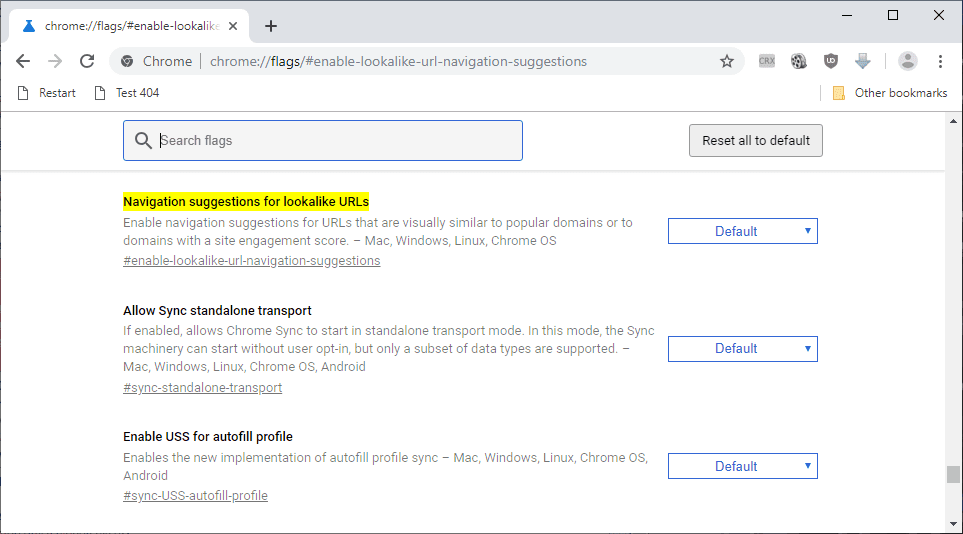Chrome to warn users about lookalike URLs
Google Chrome is warning users soon when they visit what Google callsalal URLs. Lookalike URLs is a separate term that describes site addresses that are very similar to the domain of an authoritative or popular site.
Google does not seem to distinguish between targeting when it comes to the definition of lookalike URLs; the Google Chrome function displayed warnings or different types of URLs, for example URLs that were not registered, but still resemble popular URLs, but also when they visit URLs that are registered and load sites when they are opened.
Phishing attacks, a common form of Internet threats designed to steal account credentials and other important data, often use lookalike domain names to make the attack – occur as another site – more effectively.
Chrome: Navigation suggestions for lookalike URLs

Chrome algorithm determines whether URLs are possible lookalike URLs. The web browser gives a notification & # 39; you were meant to go to [URL] at the top of the page if the algorithm determined that the visited URL is probably not the targeted target of the user.
Is not that what Chrome’s phishing protection is meant to do? Yes and no. Phishing protection protects users from reported phishing sites while the new security feature works against potentially dangerous sites.
The security feature is currently hidden behind a flag. The flag is available in all versions of Chrome that Google supports, but it only works in the Canarian versions of the browser (maybe also Dev, not tested).

Here’s what you need to do to enable it:
- Location chrome: // flags / # enable-lookalike-url- navigation-suggestions in the address bar of the browser.
- Switch to the status of the flag of Enabled (default).
- Restart the Chrome web browser.
Chrome issues the notifications & # 39; you wanted to go to & # 39; again if you visit a lookalike URL after the reboot. Note that the browser does not capture all lookalike URLs, but only extracts them. Google is still probably working on the determination algorithm because it is not always clear why a URL is detected as a lookalike, while another, very similar URL is not.
The function is experimental at the time of writing, which means that Google may change or delete it completely in the future. In my opinion, highlighting look-alike URLs is especially useful for inexperienced users. It can happen that they enter login details and other important information on sites, and to deal with these lookalike sites provided they act and do not ignore the message.

